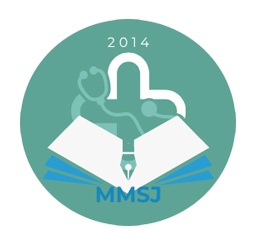Language: The journal welcomes submissions written in either Arabic or English.
The text is single-spaced; uses a 12-point font.
Types of articles: original article, review article, case report, short communication, and letter to the editor.
- Original article
Maximum length: 3000 words (excluding the title, abstract, figures, tables and references).
Title: The title should be explicit, descriptive, clear and brief.
The title should be followed by a list all authors’ full names, affiliations, and name and address of the corresponding author, including, telephone number, and e-mail address.
Abstract: should be structured, clear, concise and precise summary of the study. Not more than 250 words to include a background, methods, results and conclusion. The abstract should be followed by five significant and relevant keywords.
Introduction: This section should provide a comprehensive overview of the topic, elucidates the rationale behind conducting the study, and highlights the gap in existing knowledge. It should also identifies the research question, hypothesis, and objective. References must be cited in sequential order.
Materials and methods: This section should provide information on the place and population of the study. It should also clearly explain the sample size calculation, inclusion and exclusion criteria as well as the techniques and statistical methods used.
Results: This section should be presented in a clear and concise format, avoiding repetition of tables and illustrations. Patient privacy must be maintained, thus personal information such as names or identification numbers should not be included.
Tables and figures: Up to three tables and three figures are acceptable and may be expanded upon request. The tables must include legends and footnotes. Tables and figures size should not exceed half of the page. This is applied for each subtitle.
Discussion: This section involves comparing the obtained results to other studies and relevant literature, highlighting unique aspects of the study and placing findings in the context of existing evidence. Repetition of statistics or material from other sections of the study must be avoided.
Conclusion: this section provides a brief summary of the overall findings of the study.
Acknowlegment
References: all references should be enlisted in consecutive numerical order according to their appearance in the manuscript. In-text reference numbers should be enclosed by brackets, as indicated at the end of this sentence (1).
The number of references allowed for citation in original articles is limited to 70.
The citation format to be used is the Vanocur style:
“https://guides.library.uq.edu.au/referencing/vancouver/introduction”.
Journal titles must be abbreviated in compliance with the Index Medicus style guide.
The author is responsible for ensuring the accuracy, completeness and the proper citation of the reference.
Manuscripts containing improperly formatted citations will be sent back to the author for correction.
- Review Articles
Review articles are generally invited manuscripts from academic researchers with significant expertise in their respective subject fields in addition to individual researchers.
A review article is a comprehensive and impartial analysis of current trends in a particular subject, based on a thorough literature review. It is not an original article.
A review article comprises of a succinct abstract and a comprehensive main body supplied with appropriate illustrations and a conclusion. The abstract should be limited to 500 words, whereas the main body can extend up to 5000 words, with a maximum number of 100 references, 20 figures, and 5 tables.
- Short Communication
The aim of Short Communications is to expeditiously disseminate concise findings obtained from one's original work. The abstract should be limited to 100 words, while the main body can be up to 1500 words, with a maximum number of 20 references, 2 figures, and 2 tables.
- Case report
Cases that are novel, unique and challenging with clinical significance or implications can be reported. Such cases should provide valuable learning opportunity for the readers. Priority will be given to cases with significant diagnostic or therapeutic challenges. The title should be followed by the words “case report”. The abstract should be limited to 100 words, while the communication could have be up to 1000 words, with a maximum number of 10 references, 2 figures, and 2 tables.
- A letter to the editor
A letter to the editor should be concise and provide conclusive remarks and criticism regarding an article published recently in the MMSJ. The letters are not subject to peer review. Publication or rejection of the letter is at the discretion of the Editor-in-Chief. No abstract, up to 500 words for text, a limit of 2 figures and 2 references, and two authors maximum.
- Expert Opinion

